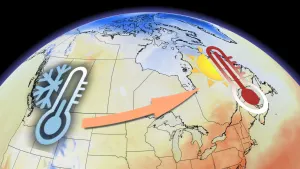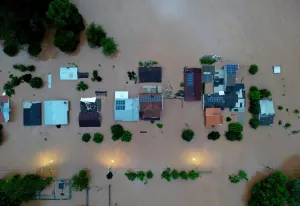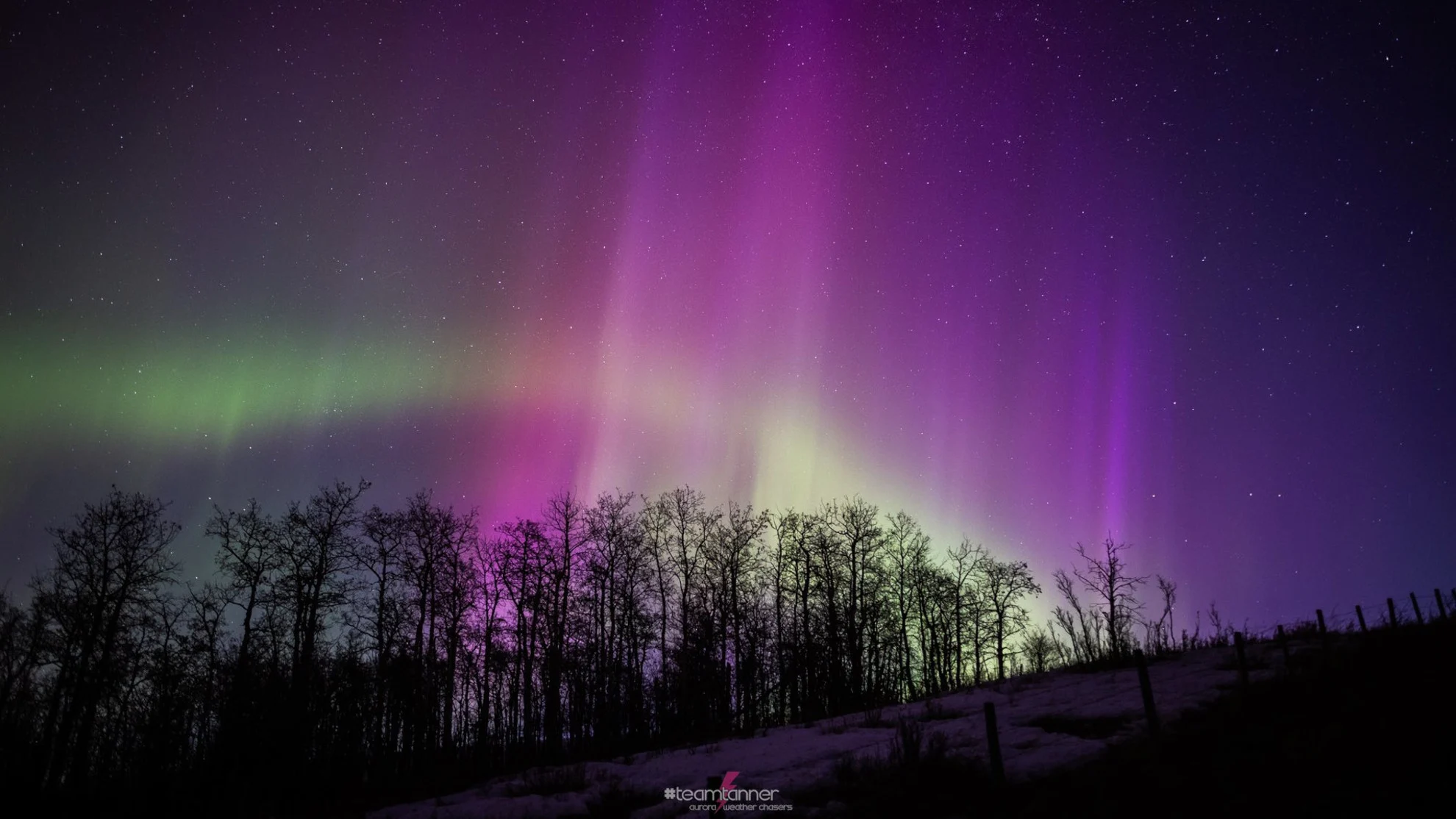
The Northern Lights may shine across Canada tonight
Space Weather forecasters have issued a Geomagnetic Storm Watch for Monday night!
On Saturday, an immense solar storm erupted from the Sun, which could spark bright displays of the Aurora Borealis across Canada Monday night.
The Sun ended roughly two weeks of relatively sedate conditions over the weekend, unleashing a massive solar filament from its surface on Saturday. This cloud of solar particles — also known as a coronal mass ejection or CME — has been expanding into space over the past two days, aimed more or less directly at Earth.
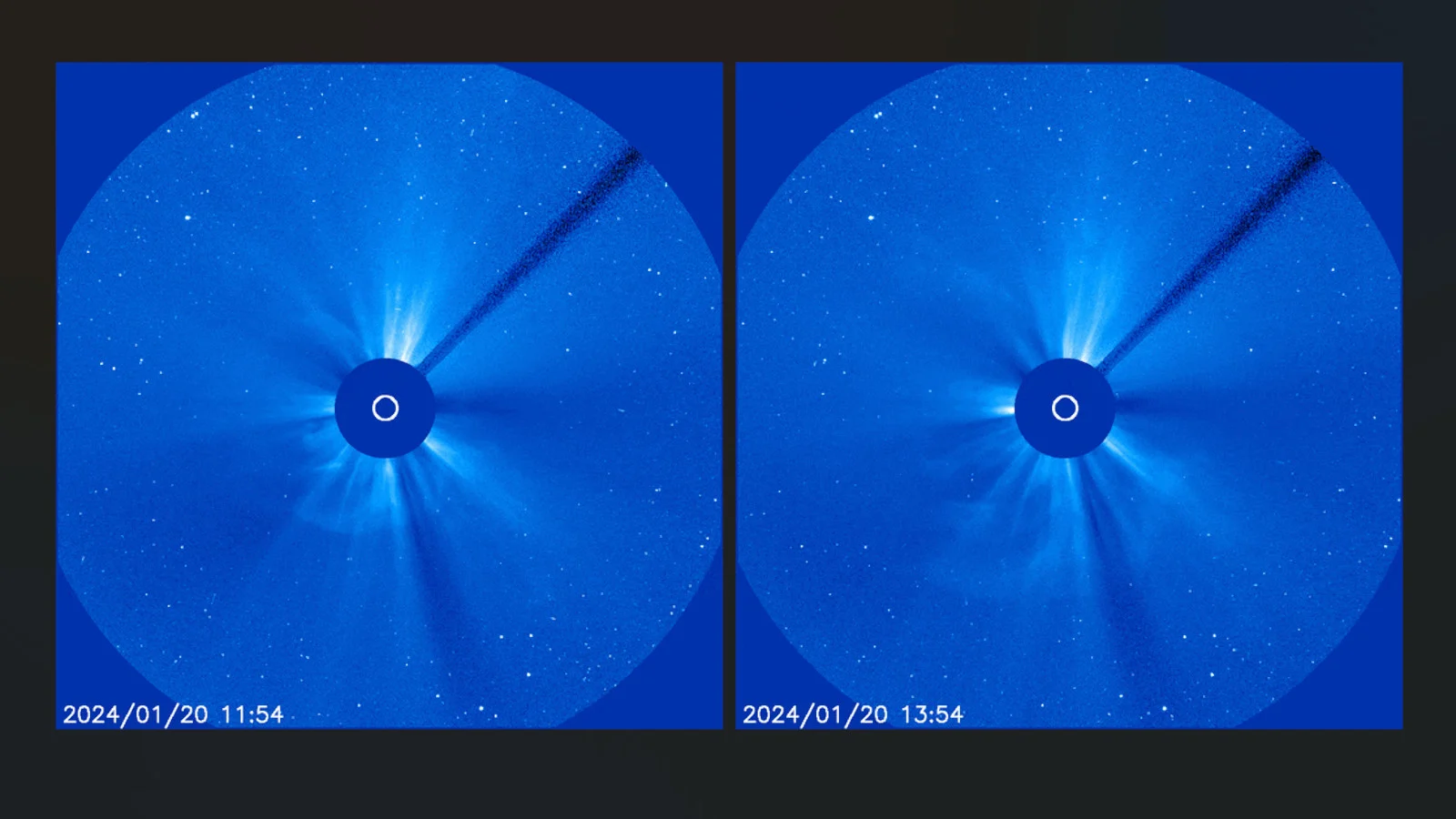
Coronagraph views from the Solar and Heliospheric Observatory show Saturday's coronal mass ejection expanding away from the Sun. Credit: NASA/ESA SOHO
When this 'solar storm' sweeps past us sometime late on Monday, it could cause a disturbance in Earth's magnetic field, known as a geomagnetic storm. During these events, the changes and fluctuations in the planet's magnetic field tend to trap the energetic solar particles from the CME and funnel them down into Earth's atmosphere. This results in displays of the Aurora Borealis and Aurora Australis, aka The Northern and Southern Lights.
NOAA's Space Weather Prediction Center has issued a Geomagnetic Storm Watch for the night of Monday, January 22 through Tuesday, January 23. According to their forecast, the CME could produce up to a G2 (moderate) geomagnetic storm.
SWPC ranks geomagnetic storms on a five-tier scale — from G1 (minor) through G5 (extreme). Each step up on the scale comes with more significant potential for problems with satellites in space and power grids on the ground. At the same time, this also impacts the auroras — both their intensity and how far south they can be seen.

SWPC's experimental aurora visibility maps for the nights of January 22 and January 23, 2024. Credit: NOAA
The maps above show the typical visibility of the Northern Lights during the G2-level storm expected Monday night (left) and during the regular 'substorm' levels predicted for Tuesday night (right). The colours represent the chance of seeing the aurora (red is the highest probability, followed by green, with clear areas of the map having little chance).
Based on the SWPC forecast, nearly all of Canada could have the chance to spot the auroras tonight. The best potential will be through northern Quebec and northern Ontario, Manitoba, most of Saskatchewan, central and northern Alberta, and across northern British Columbia. For those regions outside the aurora arc but still north of the thin red line on the maps above, it may be possible to spot the auroras right along the northern horizon.
If the Northern Lights show up tonight, seeing them will depend on a few factors.
Reasonably clear skies are essential, as clouds will obscure the view. Therefore, be sure to check your local weather forecast. Also, even if they do show up, aurora displays often appear pretty dim, with bright colours and patterns only revealing themselves when they are captured using long-exposure photography.
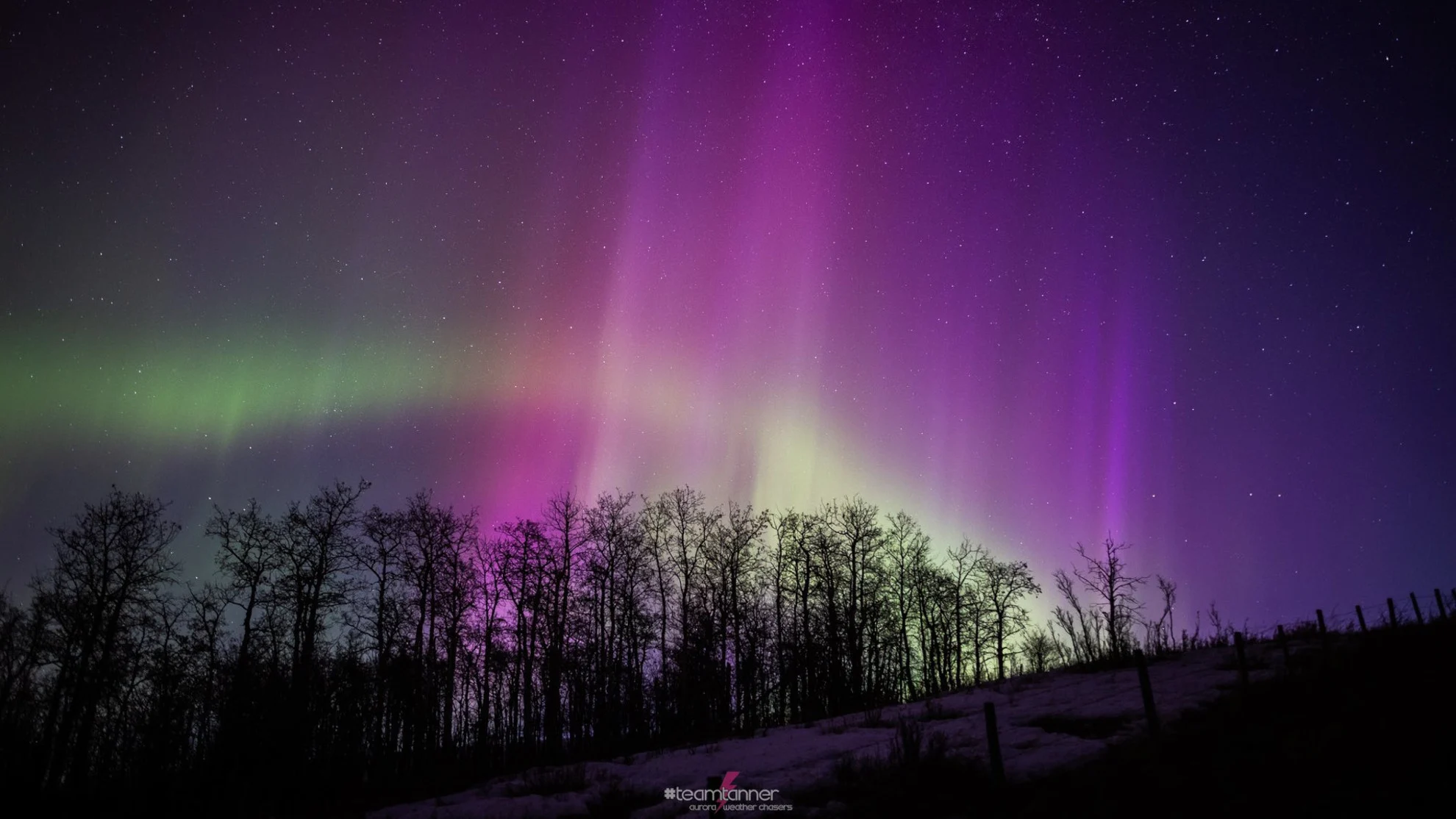
Aurora and storm chasers Tree and Dar Tanner captured this view of the Northern Lights from central Alberta on March 23, 2023. Credit: Team Tanner
For this reason, viewing from under a dark sky, as far from urban light pollution as possible, is important. Additionally, it takes the human eye a bit of time to adapt to the dark and to become sensitive enough to pick out faint or dim phenomena. Thus, giving your eyes about 20-30 minutes to adjust will increase your chances of seeing the auroras for yourself.
(Video at the top of the article is courtesy Jeff Adams, who recorded the time lapse from Gull Lake, Alberta on May 5-6, 2023, and uploaded it into The Weather Network's UGC Gallery)







